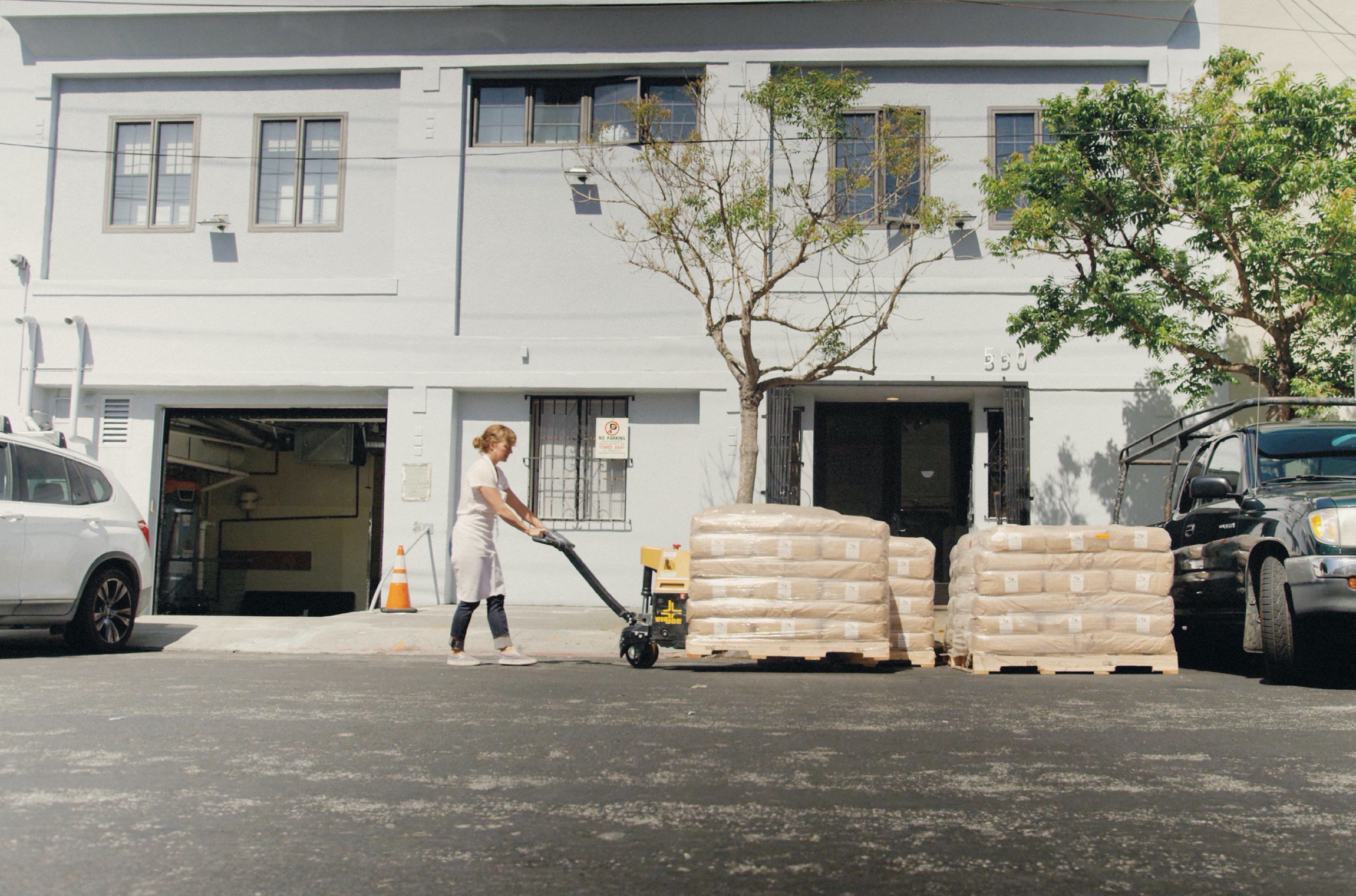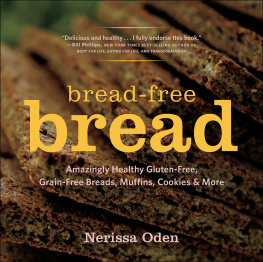Chad Robertson - Bread Book : Ideas and Innovations from the Future of Grain, Flour, and Fermentation [A Cookbook]
Here you can read online Chad Robertson - Bread Book : Ideas and Innovations from the Future of Grain, Flour, and Fermentation [A Cookbook] full text of the book (entire story) in english for free. Download pdf and epub, get meaning, cover and reviews about this ebook. year: 2021, publisher: Clarkson Potter/Ten Speed, genre: Home and family. Description of the work, (preface) as well as reviews are available. Best literature library LitArk.com created for fans of good reading and offers a wide selection of genres:
Romance novel
Science fiction
Adventure
Detective
Science
History
Home and family
Prose
Art
Politics
Computer
Non-fiction
Religion
Business
Children
Humor
Choose a favorite category and find really read worthwhile books. Enjoy immersion in the world of imagination, feel the emotions of the characters or learn something new for yourself, make an fascinating discovery.
- Book:Bread Book : Ideas and Innovations from the Future of Grain, Flour, and Fermentation [A Cookbook]
- Author:
- Publisher:Clarkson Potter/Ten Speed
- Genre:
- Year:2021
- Rating:3 / 5
- Favourites:Add to favourites
- Your mark:
- 60
- 1
- 2
- 3
- 4
- 5
Bread Book : Ideas and Innovations from the Future of Grain, Flour, and Fermentation [A Cookbook]: summary, description and annotation
We offer to read an annotation, description, summary or preface (depends on what the author of the book "Bread Book : Ideas and Innovations from the Future of Grain, Flour, and Fermentation [A Cookbook]" wrote himself). If you haven't found the necessary information about the book — write in the comments, we will try to find it.
Bread Book : Ideas and Innovations from the Future of Grain, Flour, and Fermentation [A Cookbook] — read online for free the complete book (whole text) full work
Below is the text of the book, divided by pages. System saving the place of the last page read, allows you to conveniently read the book "Bread Book : Ideas and Innovations from the Future of Grain, Flour, and Fermentation [A Cookbook]" online for free, without having to search again every time where you left off. Put a bookmark, and you can go to the page where you finished reading at any time.
Font size:
Interval:
Bookmark:
Acknowledgments
Many thanks to Jen Latham, my coauthor and dear friend, surf pal, and head of bread for the past several years at Tartine, who did much of the heavy lifting to get all these ideas into book form and was a true gem to work with outside of the bread room.
Chad Robertson
Im deeply grateful to Jay, without whom none of this would have happened. And to Mom and Dad for being epic parents and grands. Thank you to Chad, for every opportunity and for always believing in me. Your friendship and mentorship mean the world to me.
Jennifer Latham
Heartfelt thanks to:
Liz Barclay, photographer and creative collaborator, who shot the book over this last challenging and strange year, between San Francisco and Los Angeles, shining her light all along the way.
Katherine Cowles, friend, advisor, and literary agent, for her continued steadfast support in both talking me up and talking me down.
Lorena Jones, longtime editor and de facto director of book operations, without whom none of the last few books would have ever been finished.
Juliette Cezzar, longtime designer and collaborator who filters and focuses the crazy ideas in the beginning and makes the really hard parts at the end actually fun.
Maria Ziska, recipe tester and writer, master of the thoughtful and thorough details of the style sheet.
Nidia Cueva, for her wonderful work on prop selection and styling.
The Tartine bakers who make the bread happen every day no matter what else is going on, and especially to managers Meg Fisher, Lisa Chun, Veronica Cates, and Michael Rogers, who each performed many unparalleled feats of bread heroism during the making of this book.
Chef collaborators Nico Pena, Jordan Whittrock, Max Blachman Gentile, DK Kollender, and their teams in San Francisco and Los Angeles, for making lots of simple, healthy, and beautiful food.
Kevin Morse and his team at Cairnspring Mills along with Tom and Sue Hunton at Camas Country Mill, for pioneering a new way of building a sustainable, regional grain model for all of us.
Chad Robertson and Jennifer Latham
Chad Robertson is the cofounder of Tartine,now with eight locations in Northern andSouthern California and six in Seoul, SouthKorea. His foundational book, Tartine Bread,became the manual for home bread bakerswho aspired to re-create his world-famousrustic country loaves and established him asthe premier American bread baker. Robertsonis also the coauthor of Tartine, written withElisabeth Prueitt, and the author of TartineBook No. 3. The recipient of the James BeardAward for Outstanding Pastry Chef, Robertsonhas appeared in a wide range of publications,from the New York Times to Vogue.
Jennifer Latham is Tartines director of breadand manages the bread-making teams inNorthern and Southern California, collaboratingwith Robertson on innovations and techniques.She and Robertson cowrote and recorded the Getting Started with Sourdough audiobook.
Liz Barclay is a photographer, creativedirector, and visual artist with a passion forfood, music, art, and culture. Her clientsrange from the New York Times, Vogue, and The New Yorker to Nowness, Nike, CapitolMusic Group, and Apple. Barclay is also anambassador and volunteer with CoachArt,Food Bank for New York City, and EdibleSchoolyard Project.


About Grain and Flour
The cultivation of reliable food sources, including grains, has been considered one of the biggest technological innovations of humankind, ushering in the shift from hunter-gatherer societies to modern civilized culture as we know it. It is widely understood by historians and archaeologists that people have been consuming grains for much of human history. Consequently, bread has been a cornerstone of sustenance for families and communities for millennia, nourishing generations across the world.
Wheat is a cereal grain in the grass family. The seeds of the wheat plant are edible for humans, more so when they are crushed, hydrated, fermented, and baked into bread. There are a tremendous number of different types of wheat. Some, like einkorn and emmer, are relatively unchanged from the wild grasses that still grow in the Fertile Crescent (the birthplace of grain cultivation). Some, such as land wheat in Scandinavia and Sonora in Mexico, have evolved slowly along with the regional cuisine, so the distinctive local breads and the flour they are made from are well suited to each other. Still others, such as the Turkish Red varieties grown for commodity milling across much of the United States, have been bred for qualities such as uniform height of seed head and maximal yield per acre.
A wheat berry is made up of three basic components: the bran, the germ, and the endosperm. The bran, which is made mostly of insoluble fiber and some vitamins, is the outer hull that protects the seed. The germ contains all the information for a new plant to growthe germ of the new plant. It is made of oils, vitamins, and enzymes. It is often the first part of the grain to be sifted off during flour production because the oils go rancid quickly compared with the other parts of the wheat berry. The endosperm is made of the starch and protein that will feed the young plant as it starts to sprout. The endosperm makes up about 80 percent of the wheat berry. If you think of a wheat berry as an egg, the bran is the shell, the endosperm is the white of the egg, and the germ is the yolk.
A raw wheat berry contains a tremendous amount of nutrition, but not in an ideal form for people to digest. Ruminant animals, such as cows and goats, have evolved to eat grasses (wheat, rice, barley, rye, and oats are all in the grass family). They chew the leaves and berries several times and have four stomachs to ferment and break them down. Humans must perform the crushing and fermenting steps outside their bodies to access the best nutritional potential of the grain.
As humans became more adept at consuming grains, the crushing, fermenting, and baking became more refined. If you simply crush grain, add water, wait for the mixture to ferment, and then bake it, you will get some form of bread. The properties of grainample starch available for yeast and bacteria to consume (ferment) and stretchy protein to trap the gasses that are a by-product of that fermentationmean that at its most basic level, bread-making almost happens by itself. It takes the baker to shepherd it along to the next steps when its ready. Hence, the best bread comes from bakers who are skilled in choosing when to move on to the next stage of the process.
Protein content is one of the most relevant aspects of grain makeup. Gluten is protein (though not the only protein found in grain). The webs of gluten that are formed when wheat flour is hydrated, agitated, and fermented trap gas bubbles to form the beautiful open crumb we love to see when we cut into a loaf.
Higher-protein wheat flour contains more gluten. The more gluten there is in the flour, the stronger the dough will be. As a general rule, higher-protein flours (12 to 14 percent) are better for bread baking, especially if you are looking for a fluffy loaf with an open crumb. Lower-protein flours (8 to 10 percent) are often used for making cakes and pastries, in which lower protein results in a more tender crumb. All-purpose flours, which contain 10 to 12 percent protein, are usually somewhere in the middle. Thats not the whole story, however. In wheat, gluten itself is made up of two constituent proteins, glutenin and gliadin. Glutenin has more strength and plasticity, while gliadin contributes to the extensibility of dough. Two different flours may have the same protein percentage, but if one has a higher ratio of gliadin to glutenin, it will be much more extensible and viscous. Another flour at the same protein percentage with a higher proportion of gliadin will feel much stronger and more elastic. Thats why you cant always know how a flour will perform by only looking at protein percentage.
Font size:
Interval:
Bookmark:
Similar books «Bread Book : Ideas and Innovations from the Future of Grain, Flour, and Fermentation [A Cookbook]»
Look at similar books to Bread Book : Ideas and Innovations from the Future of Grain, Flour, and Fermentation [A Cookbook]. We have selected literature similar in name and meaning in the hope of providing readers with more options to find new, interesting, not yet read works.
Discussion, reviews of the book Bread Book : Ideas and Innovations from the Future of Grain, Flour, and Fermentation [A Cookbook] and just readers' own opinions. Leave your comments, write what you think about the work, its meaning or the main characters. Specify what exactly you liked and what you didn't like, and why you think so.

![Chad Robertson Bread Book : Ideas and Innovations from the Future of Grain, Flour, and Fermentation [A Cookbook]](/uploads/posts/book/413919/thumbs/chad-robertson-bread-book-ideas-and-innovations.jpg)



